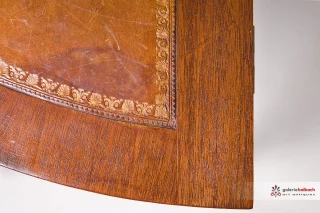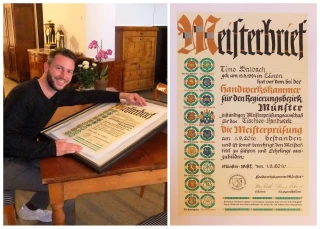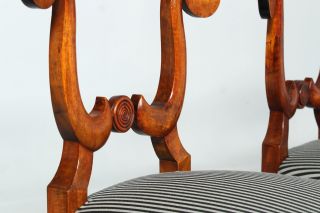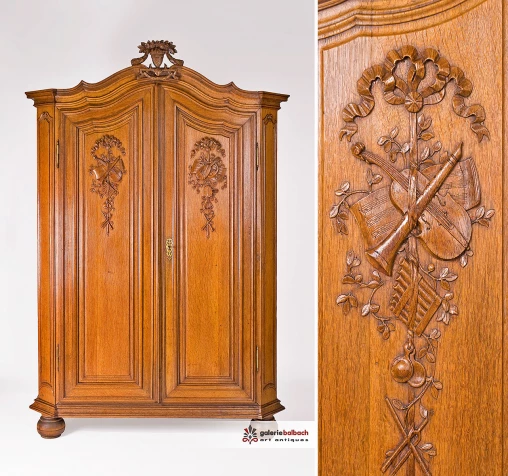The ecological footprint
Sustainable living with antique furniture!
An oak tree was felled over 220 years ago for this classicist hall cupboard. The oak stood in the Moselle region near Trier.
A carpenter, a carver and a blacksmith worked on the cabinet at that time - craftsmen from the region.
Perhaps after 100 years the cabinet was restored, made pretty and sold on. In this way, the cabinet could have secured another job after 100 years.
Now - another 120 years later - the cabinet is back on the market. It still works perfectly. It will make its buyer happy, accompany him for many years and at some point - perhaps in 100 years - it will be restored.
That is pure sustainability!
When restoring antique furniture, we only use natural materials.
Materials appropriate to the period of the furniture are used. Shellac is applied layer by layer until every pore is closed, or high-quality wax is used to create a surface that corresponds to the original.
We use waxes primarily for oak and softwood furniture. We use natural shellac on fine woods such as walnut, cherry or mahogany.
To make the surface of heavily used furniture as robust as possible, we use oils or oil-wax mixtures. This is particularly useful for dining tables that are wiped down with a damp cloth and are also subject to heavy everyday wear and tear.
Also interesting

Shaped by life
What could be more beautiful than the old, original leather? A small water stain here, a quirk there, [...]Read more

The master craftsman's diploma
...craftsmanship has golden soil! Antique furniture is a piece of craftsmanship history! The age and [...]Read more

Hotly loved patina
Furniture restoration with patina preservation Whether chest of drawers, table, cupboard or chair, if [...]Read more
